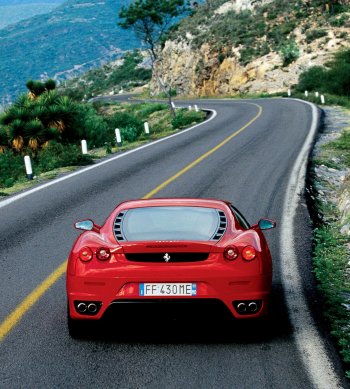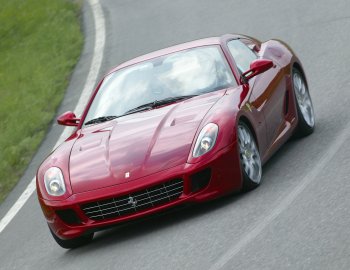|
Ferrari have
developed a new optional four-wheel drive system, dubbed as
"insertable 4x4", which is designed to maximise the
performance capability of their sports cars under all
conditions. This latest project follows on from an
'adaptable' four-wheel drive system that was developed in
Maranello last year and clearly demonstrates again that
Ferrari are looking very closely at this form of traction.
The new insertable four-wheel system seeks to remove the
disadvantages of a permanent four-wheel drive arrangement,
particularly the loss of engine torque associated with it,
by using a system that can be taken out of the equation as
required. However Ferrari's engineers have worked hard to
remove the obstacles in the way of an optional four-wheel
drive system and create a set-up "which is easy and cost
effective to implement, free from the drawbacks described
above and which at the same time allows for an increase in
performance, stability and traction control in all grip
conditions."
"Currently, a sporty, high performance car presents rear
wheel drive and is provided with a self-locking differential
aiming at maximising motive torque transmitted by the rear
wheels to the road surface in all conditions," say Ferrari.
"Rear wheel drive with self-locking differential is a
premium for sporty driving in either optimal grip conditions
(dry road) or reasonable grip conditions (wet road);
however, such a solution in combination with a high motive
torque and large-sized tyres entails very difficult and
potentially dangerous driving in poor grip conditions
(flooded or icy road).
"The use of permanent or insertable for wheel drive has been
proposed in order to improve the driveability of a sports
car in poor grip conditions. Whilst permanent four wheel
drive considerably improves the behaviour of motor vehicles
in poor grip conditions, it presents the drawback of
increasing loss of torque in the transmission system and
conferring to the car a behaviour in optimal grip conditions
which is not always appreciated by drivers.
|
 |
|
Ferrari's new insertable four-wheel-drive system
can both be used for their mid-engine cars, as well
as the front-engine cars with transaxle layout. |
|
|
 |
|
Ferrari's new insertable four-wheel drive system is
based on the traditional RWD layout, where the main
driving wheels are constantly connected to the
engine via the usual gearbox and clutch arrangement.
|
|
|
"Insertable four wheel drive allows the driver to decide
whether to use rear-wheel drive or four-wheel drive; in this
way, the drive may use rear-wheel drive in optimal grip
conditions and four-wheel drive in poor grip conditions.
However, insertable four-wheel drive is typically complex
and costly to manufacture; furthermore, the driver may not
realise the presence of sheets of ice on the road and may
not therefore engage four-wheel drive in a timely manner.
Ferrari's new insertable four-wheel drive system is based on
the traditional RWD layout, where the main driving wheels
are constantly connected to the engine via the usual gearbox
and clutch arrangement. The second pair of wheels are
selectively connected via their new insertable transmission
system. "The insertable transmission system presents a
second clutch, which on one end is connected with fixed
transmission ratios to the crankshaft upstream of the
gearbox and on the other is connected with fixed
transmission ratios to the secondary driving wheels," say
Ferrari. The insertable transmission system also transfers
motive torque to the front wheels when a difference between
the rotation speed of the front and rear wheels occurs; ie,
essentially when the driving wheels slip".
Technically, the secondary clutch, which controls the
provision of torque to the front wheels, is controlled by an
electronic control unit. Factors such as the vehicle's
"longitudinal speed", "longitudinal acceleration",
"transversal acceleration", and accelerator pedal position
and movement characteristics, are taken into account as
input for the the electronic control unit. The electronic
control system has also been engineered to include memory
units, called "maps", where parameters describing the
vehicle's dynamic characteristics can be stored, each of
them optimised for different grip conditions.
Ferrari's new insertable four-wheel-drive system, which has
been road-tested, can both be used for their usual
mid-engine cars, as well as the front-engine cars with
transaxle layout.
|
|
|
|